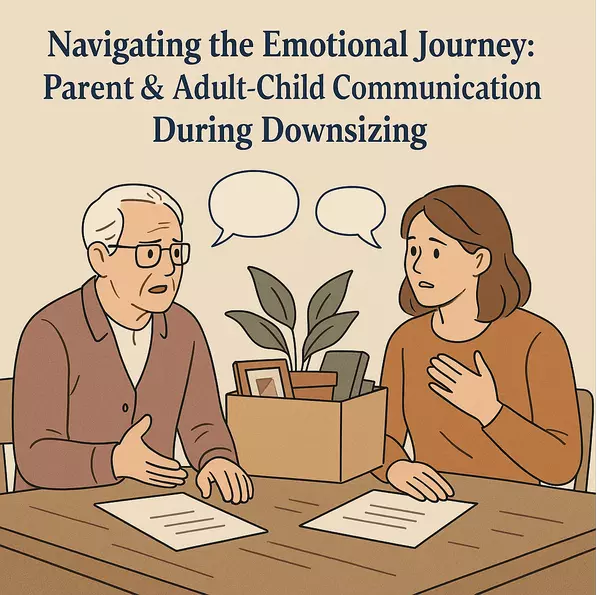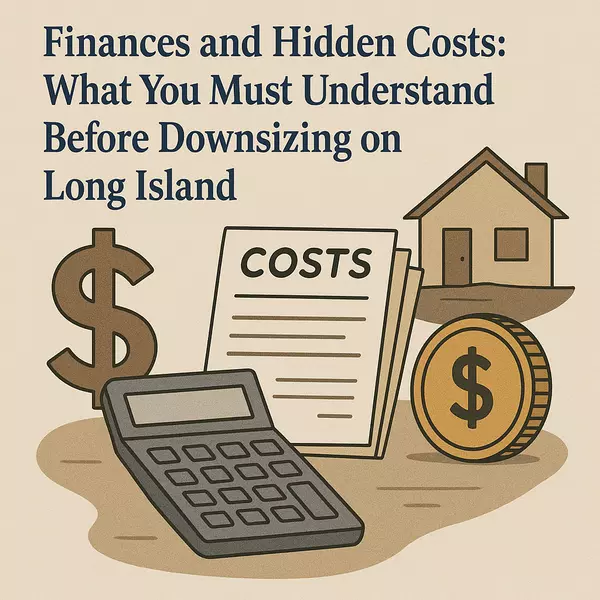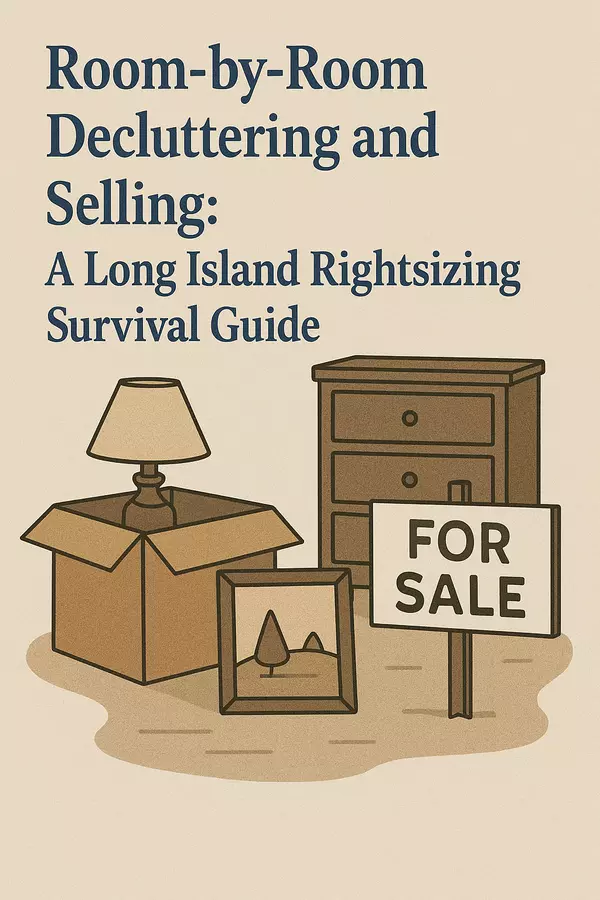Designing a Smaller, Safer, Senior-Friendly Home: Downsizing Floor Plan Tips for Long Island Families
When seniors and their families think about downsizing, most picture the moving process — packing boxes, decluttering, and choosing a new location. But what often gets overlooked is just as important: how to make the next home safe, comfortable, and supportive for this stage of life.
I've seen this firsthand in my own family. My mom has Parkinson's, and my dad has been her devoted caregiver for years. We've talked many times about what would make their lives easier if they move — things like fewer stairs, a walk-in shower, or just a layout that doesn't feel overwhelming to maintain.
Watching them face these decisions has shaped the way I guide the seniors and families I work with. Downsizing isn't only about "smaller" — it's about better.
Here's how to think about designing a senior-friendly home on Long Island that's not only smaller, but also safer and more enjoyable.
What Makes a Home "Senior-Friendly"?
A senior-friendly home is one that reduces risks, supports independence, and adapts to changing needs. Some of the most important features include:
- • Single-floor living: No stairs to climb every day
- • Open layouts: Wider spaces to maneuver safely, even with walkers or wheelchairs
- • Safe bathrooms: Walk-in showers, grab bars, and non-slip flooring
- • Good lighting: Bright, layered lighting to prevent trips or falls
- • Low maintenance: Smaller spaces, easier to clean, and fewer upkeep demands
The Goal
The goal isn't to make the home feel medical or restrictive — it's to make it comfortable, beautiful, and safe.
Common Safety Risks in Traditional Homes
Most seniors live in homes that were never designed with aging in mind. Here are some common risks I see when helping Long Island families prepare for downsizing:
Staircases
Even short flights of stairs can become difficult over time.
Bathtubs
Stepping over a tub edge is one of the biggest fall hazards.
Slippery floors
Tile or hardwood can become dangerous without proper traction.
Cluttered layouts
Oversized furniture and crowded rooms make moving around difficult.
Poor lighting
Dim hallways and stairwells can hide tripping hazards.
Downsizing offers a chance to start fresh with a home that solves these challenges before they become problems.
Universal Design: The Secret to Comfort and Safety
Universal design means creating spaces that work for people of all ages and abilities. Here are some simple but powerful changes to look for — or add — in your next home:
Key Universal Design Features:
- • Wide doorways and hallways: Makes the home feel open and allows for mobility aids
- • Lever-style handles: Easier to use than traditional knobs
- • Walk-in showers with seating: Safer and more comfortable
- • Non-slip flooring: Vinyl or textured tile can be both stylish and practical
- • Accessible storage: Pull-out shelves and drawers instead of hard-to-reach cabinets
✨ The Best Part
These features not only make life safer, they make it easier and more enjoyable, too.
Local Long Island Resources for Safer Homes
One of the benefits of working on Long Island is access to trusted professionals who specialize in senior-friendly design. Families can explore:
Professional Services
- • Contractors who specialize in aging-in-place renovations
- • Local handymen for small but important fixes (grab bars, railings, lighting)
Design & Support
- • Interior designers who understand downsizing layouts
- • Community programs that sometimes offer grants for accessibility upgrades
The right team can transform even a modest condo or co-op into a home that feels safe and welcoming.
Downsizing Doesn't Mean Downgrading
One of the biggest worries I hear from seniors is that a smaller home will feel like "less." The truth is, with the right design, a smaller home can actually feel more comfortable, more freeing, and more joyful.
Smaller rooms = easier upkeep
Less cleaning, less maintenance.
Smarter layouts = more usable space
Multi-purpose rooms make every square foot count.
Intentional design = less stress
A safer, simpler environment brings peace of mind to both seniors and their adult children.
When I talk with my parents about their future home, I remind them: it's not about giving up — it's about creating a place that truly supports the life they want to live now.
The Role of Adult Children in the Process
For adult children, helping parents downsize can be tricky. You want to support them, but not take over. Here are a few gentle ways to help:
The process works best when it feels like a partnership.
A Real-Life Example
Not long ago, I worked with a couple in their 70s who were leaving a large colonial in Suffolk County. They were nervous about moving into a smaller ranch, worried they'd miss the space.
Together, we focused on making the new home truly theirs — wider doorways, a walk-in shower, brighter lighting, and a cozy, open living room layout.
Within weeks of moving in, they told me they felt relief. Their new home wasn't bigger, but it felt better — easier to live in, safer to navigate, and more suited to their daily routines. That's the power of designing with intention.
Final Thoughts
Downsizing isn't just about finding a smaller house. It's about creating a home that fits this chapter of life — one that's safe, supportive, and still full of comfort and beauty. Whether it's a condo in Huntington, a co-op in Rockville Centre, or a 55+ community in Port Jefferson, the right design choices can turn any space into a true haven.
For me, this work is personal. Watching my mom's journey with Parkinson's and my dad's role as caregiver has shown me how important it is to make a home that supports daily life instead of complicating it. That perspective is at the heart of everything I do when I guide families through downsizing.
Design Your Perfect Next Chapter
If you're considering downsizing — or helping a loved one — I'd love to talk with you about how to design the right space for this stage of life. As a Certified Real Estate Planner and Senior Relocation Specialist, I'll help you find not just a new home, but a safer, more comfortable way of living.
Together, we can create a home that doesn't just feel smaller — it feels better.
Categories
Recent Posts




